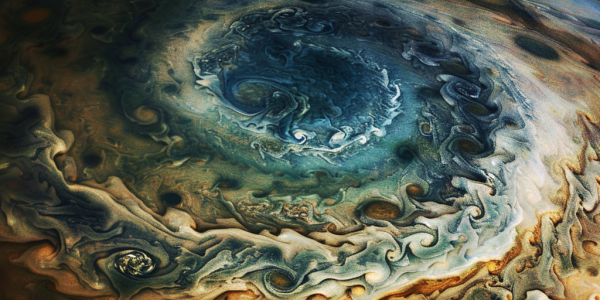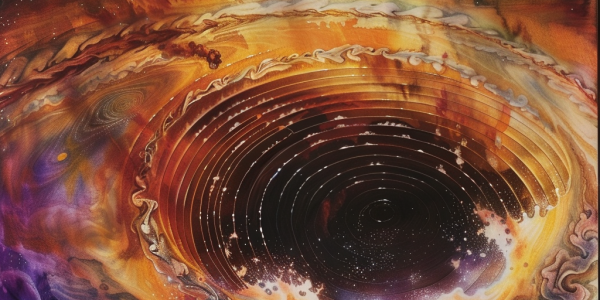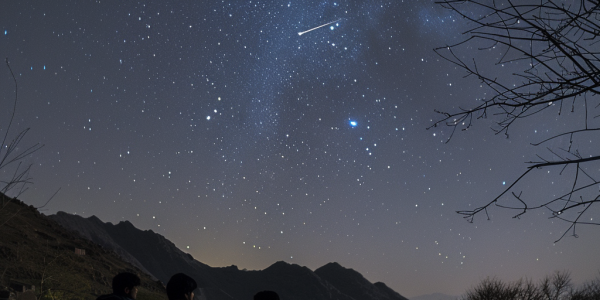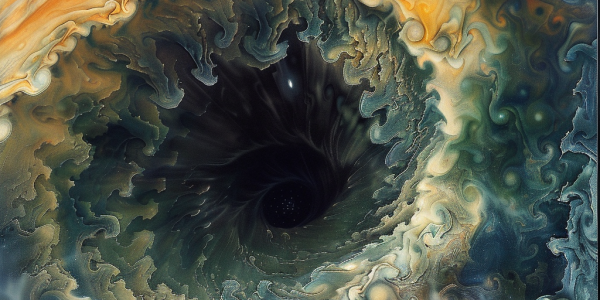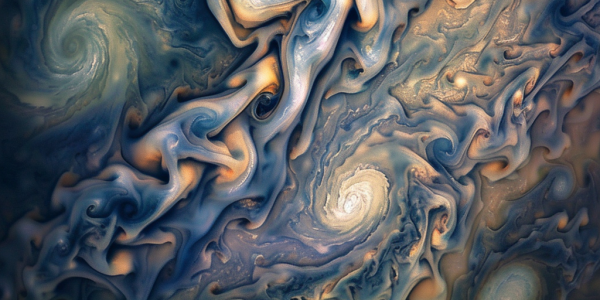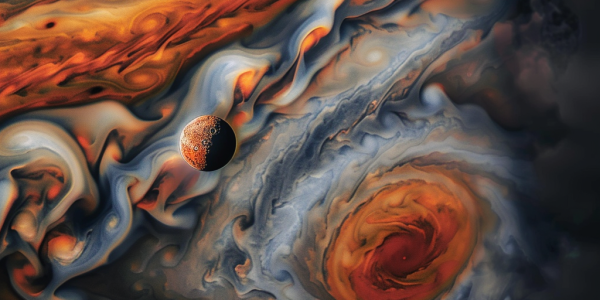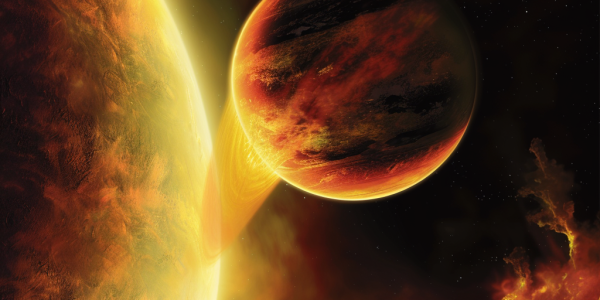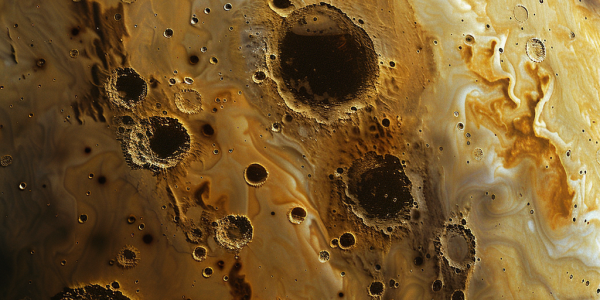Colossal Thunderstorms on Jupiter Captured in Stunning Detail
Astronomers have captured stunning images of two colossal thunderstorms on Jupiter, each larger than Earth, located in the Southern Equatorial Belt. These massive storms, observed by astrophotographer Michael Karrer, raise intriguing questions about Jupiter’s dynamic atmosphere and its potential changes. Experts estimate these storms penetrate deep into the gas giant’s atmosphere, reaching depths of 60 miles. As the scientific community monitors these phenomena, discussions about their impact on Jupiter’s appearance and the search for life on its moons continue to captivate space enthusiasts.
New Hypothesis Suggests Massive Planet Influenced Solar System’s Orbital Configuration
Recent research suggests that a massive planet, potentially larger than Jupiter, may have influenced the orbits of our Solar System’s planets during its formative years. This new hypothesis challenges existing theories of planetary migration, proposing that an external force could explain the peculiar orbital characteristics of gas giants. As scientists explore this theory, they aim to uncover the complex dynamics that have shaped our Solar System and others in the galaxy.
Astronomers Discover Dynamic Earth-Sized Spots at Jupiter’s Poles
Astronomers have discovered massive, Earth-sized dark spots at Jupiter’s poles that appear and disappear unpredictably. Visible only in ultraviolet light, these dynamic ovals challenge previous understandings of Jupiter’s atmospheric stability and magnetic field interactions. This groundbreaking research, published in Nature Astronomy, highlights the complexity of Jupiter’s atmosphere and its unique atmospheric dynamics, offering potential insights into exoplanetary atmospheres.
December 2024: A Month of Celestial Wonders and Stargazing Events
December 2024 promises spectacular celestial events, including Jupiter at opposition on December 7 and the Geminid meteor shower peaking on December 13. Stargazers can also enjoy the winter solstice and Ursids meteor shower on December 21. Discover the best stargazing destinations in India and tips for an unforgettable experience under the night sky.
Ancient Earth May Have Had a Saturn-like Ring System, New Research Suggests
Recent research suggests Earth may have had a Saturn-like ring system over 400 million years ago, potentially explaining the clustering of meteorite impact craters during the Ordovician Period. This groundbreaking study, led by geologist Andrew Tomkins, explores how a disrupted asteroid could have formed a ring around Earth, influencing both geological events and climate, including a significant global deep freeze. Discover the implications of this ancient ring and its impact on Earth’s evolutionary history.
NASA’s Juno Captures Mysterious ‘Abyss’ on Jupiter
Discover the stunning Abyss on Jupiter, featured in the Astronomy Picture of the Day on November 3, 2024. Captured by NASA’s Juno spacecraft, this dark cloud phenomenon reveals the complexities of Jupiter’s atmosphere. Learn about its intriguing characteristics and the ongoing Juno mission that continues to unlock the mysteries of our solar system’s largest planet.
NASA’s Juno Captures Stunning New Images of Jupiter’s Atmosphere
NASA’s Juno spacecraft has delivered breathtaking images of Jupiter’s chaotic atmosphere during its 61st close flyby. These stunning visuals reveal turbulent clouds and cyclonic storms, enhancing our understanding of the giant planet’s dynamics. Citizen scientists, like Gary Eason, contributed by processing raw data into vibrant representations, showcasing the intricate weather patterns of Jupiter. As the mission continues, Juno promises to unveil more insights into the evolution of planetary systems and the mysteries of our solar system.
NASA’s Juno Spacecraft Discovers Jupiter’s Mysterious Fifth Moon, Amalthea
NASA’s Juno Spacecraft recently made an intriguing discovery during its 59th close flyby of Jupiter – the mysterious fifth moon known as Amalthea. Juno captured remarkable images of Amalthea as it transited Jupiter’s Great Red Spot, providing researchers with a rare glimpse of this small but fascinating natural satellite. Despite being overshadowed by Jupiter’s more prominent moons, Amalthea’s recent sighting has reignited interest in its enigmatic properties.
JWST Unveils Tumultuous Weather Patterns on Exoplanet WASP-43b
The James Webb Space Telescope (JWST) unveils the tumultuous weather patterns of the distant exoplanet WASP-43b, a sizzling hot Jupiter located 261 light-years away. With relentless supersonic winds and a scorching inferno, WASP-43b’s unique attributes make it an ideal candidate for JWST’s keen observations. Leveraging its potent infrared capabilities, the telescope maps the planet’s atmospheric composition and structure with unprecedented clarity, shedding light on nightside clouds and chemical imbalances on this fiery exoplanet.
NASA’s Juno Captures Mesmerizing View of Volcanoes Erupting on Jupiter’s Moon Io
NASA’s Juno spacecraft captures mesmerizing images of volcanoes erupting on Jupiter’s moon Io, showcasing the dynamic landscape shaped by gravitational interactions. The stunning detail of Io’s surface reveals a network of active volcanoes and hot spots, providing scientists with valuable insights into the moon’s geology. Enhanced images highlight the beauty of Io’s volcanic wonderland, offering a glimpse into the complex interplay of forces within the Jupiter system.

